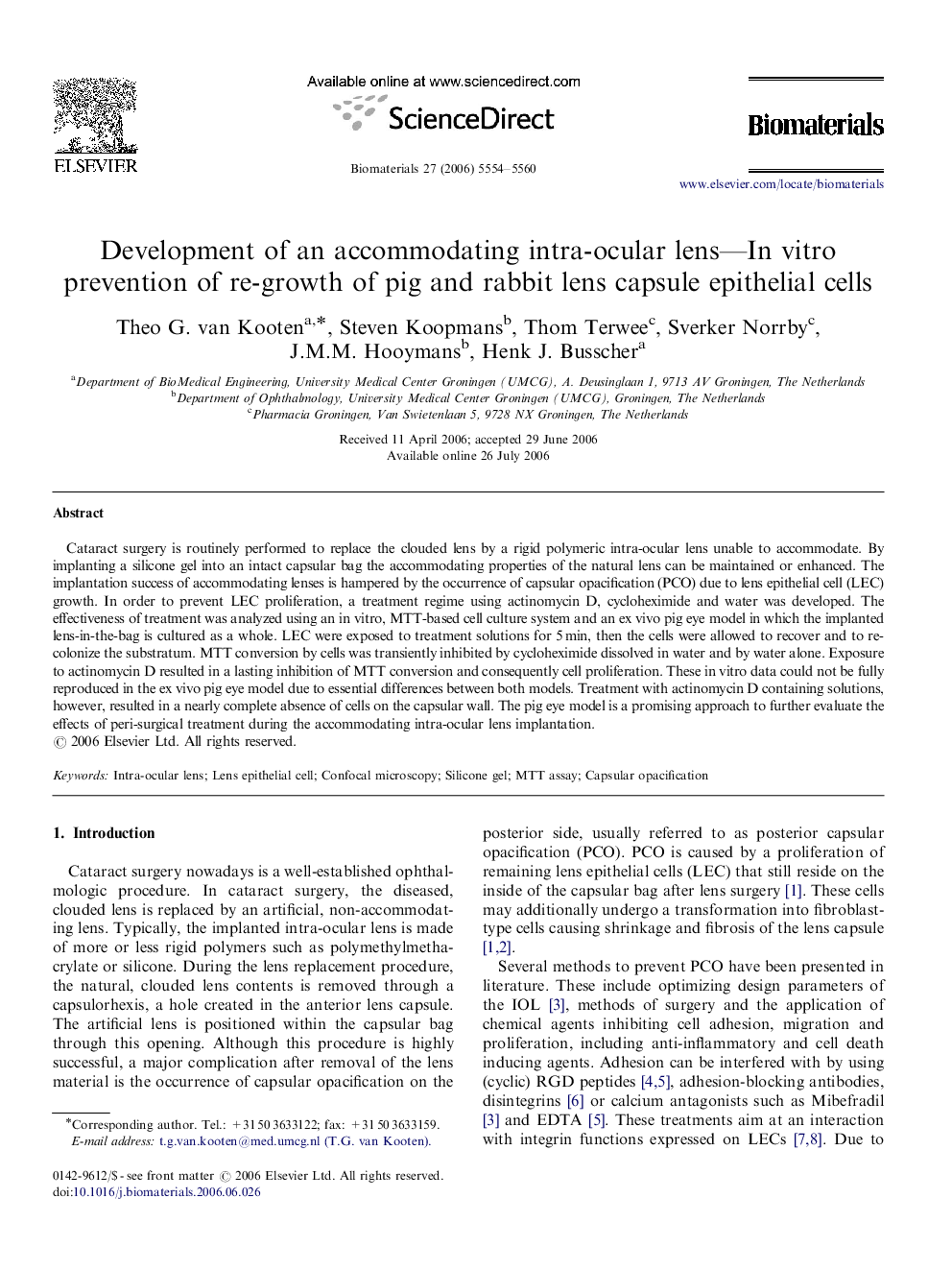| Article ID | Journal | Published Year | Pages | File Type |
|---|---|---|---|---|
| 11237 | Biomaterials | 2006 | 7 Pages |
Cataract surgery is routinely performed to replace the clouded lens by a rigid polymeric intra-ocular lens unable to accommodate. By implanting a silicone gel into an intact capsular bag the accommodating properties of the natural lens can be maintained or enhanced. The implantation success of accommodating lenses is hampered by the occurrence of capsular opacification (PCO) due to lens epithelial cell (LEC) growth. In order to prevent LEC proliferation, a treatment regime using actinomycin D, cycloheximide and water was developed. The effectiveness of treatment was analyzed using an in vitro, MTT-based cell culture system and an ex vivo pig eye model in which the implanted lens-in-the-bag is cultured as a whole. LEC were exposed to treatment solutions for 5 min, then the cells were allowed to recover and to re-colonize the substratum. MTT conversion by cells was transiently inhibited by cycloheximide dissolved in water and by water alone. Exposure to actinomycin D resulted in a lasting inhibition of MTT conversion and consequently cell proliferation. These in vitro data could not be fully reproduced in the ex vivo pig eye model due to essential differences between both models. Treatment with actinomycin D containing solutions, however, resulted in a nearly complete absence of cells on the capsular wall. The pig eye model is a promising approach to further evaluate the effects of peri-surgical treatment during the accommodating intra-ocular lens implantation.
